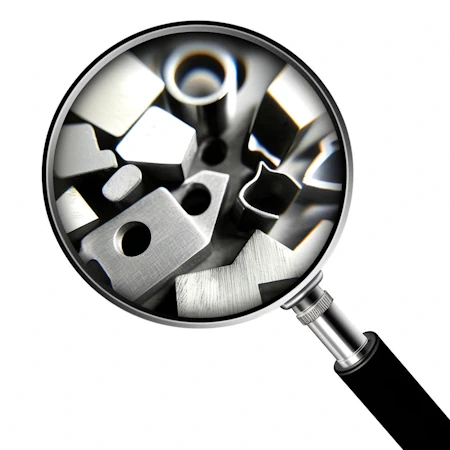Back To Browse
Refractory Alloys
Refractory Alloys Rhenium
Applications
One of rhenium's major uses is as a catalyst in the crack distillation of petroleum products. Another common use is as filaments in mass spectrometers. Rhenium is available in 99.97 (commercial) purity and 99.995 (zone refined) purity. These purity levels become most important in the mass spectrometer industry. Use for mass spectrometer filaments is a high demand area. These are normally stocked for quick delivery in purities of both commercial (99.97%) and zone-refined (99.995%) grades.
Formability
Molybdenum and tungsten normally have to be warmed up to their ductile/brittle transition temperatures before they can be formed. This is not true of rhenium. Pure rhenium sheet is produced using powder metallurgy techniques. Similar to tantalum, rhenium can be formed into a variety of shapes quite readily at room temperature.
Machinability
Rhenium is not machinable by conventional methods such as turning, milling, etc. It can be ground and EDM machined. It can also be formed and welded. Rembar will advise you on the practicality of making a part out of rhenium and, if it can be made, Rembar can make it.
Principle Design Features
Rhenium has several unique properties that are also imparted to its alloys. One of the most important of these is its high melting point of 3180°C. This is second only to tungsten. The high melting point, coupled with its ability to maintain ductility even after recrystallization, offers many advantages. Rhenium also offers high electrical resistivity over a wide temperature range. The resistivity is higher than tungsten. This characteristic, plus having a low vapor pressure, make it a good choice for filaments. This is especially true when considering ductility and the fact that it is not affected by the oxidation/reduction cycle as is tungsten. Excellent data on rhenium can be found at http://www.rembar.com/tant.htm.
Weldability
Since it maintains its ductility after recrystallization, it can easily be welded without fear of a brittle weld area. It also remains extremely ductile after welding.
Known Forms
Foil
Forgings-Discs
Open Die Forgings
Plate
Plate-Clad
Powder
Rod
Round Bar
Seamless Rolled Rings
Sheet
Sheet-Perforated
Shim Stock
Square Bar
Strip
Tube-Rectangular
Tube-Round (Seamless)
Tube-Square
Wire Rod
Wire-Flat
Wire-Round
Coil
Contour Rings
Mandrel Rings
Ribbon
Shafts
Slug
Tube-Hexagonal
Tube-Octagonal
Welded Rings
Find the metal you're looking for today.

